 June
22
June
22
Tags
Hearthstone – Analysis and Deconstruction
One of the biggest gaming success stories in the last 15 years has been Irvine-based developer Blizzard, whose games World of Warcraft, Diablo and Starcraft have millions of active players around the world. However, despite the rise of mobile and tablet over the last 5 or so years, Blizzard took a long time to get a product onto the new platform. Many predicted some form of the behemoth World of Warcraft playable on Tablet, but instead Blizzard chose something very different indeed – to release a digital Collectable Card Game (CCG) based in the Warcraft Universe. That game is Hearthstone: Heroes of Warcraft and here is my analysis of it.
Introduction to Collectable Card Games
At it’s core, Hearthstone is a Trading Card Game, only in digital form. It’s very similar in both gameplay and business model to famous CCG’s such as Magic: The Gathering, Yu-Gi-Oh and Pokemon. When analysing Hearthstone it’s useful to look at the grandfather of CCG’s Magic: The Gathering which to this day is still a phenomenally successful product and which has influenced if not dictated the design of almost every other card game since it’s inception in 1993. Designed by Richard Garfield, Magic: The Gathering is a game between two “Planeswalkers” who are dueling to the death. Planeswalkers could summon exotic creatures and cast incredible spells to defeat their opponent and this resulted in a turn-based strategy game with incredible depth, metagame and tactical strategy that is incredibly addictive and amazingly fun to play.
Magic Cards are sold in two distinct varieties: Starter Packs and Booster Packs. Starter Packs cost approximately 3 times what a booster pack costs but give you enough basic ingredients to start playing the game, only at a very limited level. Booster Packs then have additional cards that can be added to a players deck and gives them more options to plan their strategy and change their style of play to one that the individual player desires. Cards usually formed part of a large set of 250+ cards meaning that when players start off they own just a very small percentage of the total card pool. This meant that although players could play against each other without owning all cards, there was also an incentive to try and collect all of the cards in a set much like collecting all of the stickers in a World Cup (Football) Pannini sticker album.
The genius behind Magic could be found in multiple design and business model choices. Firstly as a game it was (and is) genuinely brilliant to play. Games usually take between 10-20 minutes to play and require a lot of thought, bluffing, planning and strategy similar to Chess or Poker. Anyone who is a big gaming fan should check out the game, even if you have no plans to get into it seriously.
From a business perspective the real genius was selling cards through a semi-randomised booster card model. Imagine playing Chess, but without all the pieces – IE imagine you are missing the Queen. You’d be at a big disadvantage when playing against top players. Well in CCG’s you don’t start with all of the pieces, you have to collect (buy) them. Magic also allowed you to play multiple cards of the same type in one deck so even if you had a very powerful card such as Necropotence (more on this card later), you might need 4 copies of that card to make your deck strong enough to compete against other players. Whenever purchasing a pack, you were always guaranteed one rare and two uncommon cards, but you were never guaranteed which card you would get – it was a random chance every time. Sometimes you could get lucky and get the card you really want just by opening a few booster packs. Sometimes you would have to buy 30+ booster packs to get the one you really wanted!
I often talk about Gacha in my blog and why it’s exceptionally well suited to Free-to-Play games. Well CCG’s like Magic were using Gacha over 20 years ago in the way they monetized proving what a successful business model it can be. As a teenager I used to go to my local card game shop and purchase booster packs every few weeks or so, and every time you opened one up there was a sense of drama, intrigue, anticipation and either joy or despair! It was (and is) a very addictive process and because the game itself was already brilliant it just made the overall package all the more delightful, if somewhat expensive.
On top of this, Magic also pulled off another brilliant trick. Even if you did own 4 of each copy of the card in the game, it did not mean you were the best player. Sure it meant you had all the pieces to the puzzle at your disposal, but playing the game still required skill and it was more than possible for a young upstart to beat a seasoned pro if they had a tuned deck and the skill to match it. In Magic, decks were generally formed of 60 cards, so not all cards could fit into one deck. Additionally not all cards synergised with each other. It would be extremely difficult to play a card that required many resources of one colour type with cards that required many resources of another colour type. Thus there was always a harmonious balance in the eco-system that welcomed many players but that meant the overall upper-echelon spend that a single player could make was rather large.
With Hearthstone it’s clear that the designers at Blizzard are huge CCG fans and have tried to take core game and business elements from many successful card games and apply it to a digital world. In my opinion they’ve done a great job and a serious player of many CCG’s at a competitive level it’s a great achievement to have pulled off.
The game itself is a turn-based 1-on-1 PvP game between two players playing Synchronously. Players choose a hero and prepare a deck of 30 cards, attempting to reduce the opponent’s HP to 0 from the 30 it starts at. If you’ve ever played Magic: The Gathering then you will be very at home with Hearthstone, which plays like a trimmed down version of that game. Key differentiators in the game include:
- Players automatically gain mana at the rate of one a turn (removing the need for land or resource provision cards).
- Players draw a new card every turn, but don’t die when they run out of cards. Instead they take an additional point of cumulative damage every time they cannot draw a card.
- Players can have up to 2 of the same card in any deck, unless the card is legendary, which means that only one can be added to a deck.
- Players can directly attack enemies creatures (called minions in Hearthstone)
- Each hero has it’s own unique power that can be activated for 2 mana once per turn.
It’s also not possible to react to an opponent’s action in their turn. In Magic, if you play a card in your turn, the opponent can react with an Instant card such as a Counterspell, always keeping you on your toes. In Hearthstone this is not possible which makes for a simpler experience that is easy to understand, although it does remove the bluffing nature, which is common at high levels of most CCG’s. Hearthstone does feature “Secret” cards that are played face-down and whose ability is hidden to opponent’s until trigger conditions are made in an attempt to keep some of the bluffing and intrigue factor present, although IMO also results in a lack of interaction at the very highest level of play.
Overall this means that Hearthstone is often a battle of control over the central board, and the player with the stronger board throughout the match usually results in winning.
Hearthstone also applies some of the more successful card game mechanics and meta-setups that have been lucrative for years. Players cannot use any card they posses in a deck, as cards are divided up amongst 9 hero classes and many cards can only be used by specific characters. This means a player cannot use the Rogue card Eviscerate and the Warlock Card Soulfire in the same deck for example. There are subtle differences between each Hero too, with each having a unique “Hero Power” that affects the game board.
Luck
A proverbial hot-potato of game design discussion, luck certainly plays a huge factor in all card games, but has a slightly higher precedence in Hearthstone. When playing poker, it’s a common occurrence for a player to elect to take an action that is percentage wise a very poor decision, such as going all in when holding poor cards. However, luck means that sometimes even these crazy decisions sometimes pay-off as the river comes to your rescue with exactly what you need to win.
In Hearthstone, the exact order of cards and how they are drawn when playing a game is random meaning that sometimes you can get exactly what you want when you need it (top-decking) and sometimes no matter how good a player you are, you will lose because you got a crappy draw. The thing is that although it’s possible to make systems that have no element of luck in them whatsoever, these games are often quite stale and boring. Luck means that players can sometimes engineer “Hail Mary” moments that when they come off feel amazing and make for exciting games. This can apply to any time of game and personally I believe it’s why Candy Crush has been such a success as even when you are up against a very tricky level that is clearly designed to ask you to pay, it’s possible (even if the chances are super slim) to luck out and clear it.
As Hearthstone is a digital CCG, Blizaard have introduced quite a few cards that have heavy reliance on the RNG or Random Number Generator. Sometimes the gods will carry your favour and sometimes they will snuff their nose at you. Personally I think there are a few too many RNG cards in the game and it dilutes the tactical aspect of the game. From an experimentation point of view it’s interesting to see though, as random number effects in a physical game are very hard to do right as it can be a real challenge to track everything that is going on at any one time as real life counters and markers are needed. As Hearthstone does all this for the player automatically, it makes for quick resolution with these effects.
Loop Design / Monetization
Looking at Hearthstone from a high-level, it uses the game loop above. After starting the game and running through the tutorial, players are given the opportunity to practice against the innkeeper or battle real opponents. They are given some basic cards for free and by completing quests or achieving victories with the hero characters that are selectable, earn new cards to choose from. Completing quests or winning 3 games in casual or ranked ladder play earns 10 gold, the soft currency in the game. Players can purchase a booster pack for 100 gold, which gives them more cards and options to build decks. It means that theoretically a player can earn any card in the game just by playing the game ad-infinitum and grinding perpetually. Of course the player can speed up this process by purchasing booster packs to attain cards at a far faster velocity, which is the crux of the Free-to-Play element monetisation of the game.
Just like traditional physical TCG’s cards are distributed randomly in each pack, with cards having differing rarities. A rare card is guaranteed in each pack, but the player does not know which card they will get making opening a booster pack a fun and exciting experience. Some cards are very hard to get (legendary rarity) only appearing perhaps 1 in 20 packs and which are exceptionally powerful in terms of their impact in the overall metagame. When you start to fight opponents who are ranked highly in the PvP Ladder, you’ll frequently come across decks that use large numbers of Legendary cards. Thus to compete with the top Hearthstone players you need enough of the strongest cards that will make a difference. This means either playing the game for a very long time to grind to be able to purchase booster packs for free, or paying up front for many boosters to speed-up the process. Player’s can’t buy the specific card they want which means that their total overall spend is maximised. And as they purchase many boosters, they will collect cards from each of the Hero types in the game, giving them more motivation to try new strategies and keeping them engaged with the game.
A key difference between Hearthstone and traditional CCG’s is that players are given cards for free to begin with. Usually a player has to purchase a starter pack up-front, which is a big barrier to entry. Hearthstone gives you some cards and boosters for free, making it super accessible to all players. “Accessibility” was clearly one of the “product pillars” of the title as for a CCG the game is remarkably easy to get into. I have played the game with many friends who would never go anywhere near a traditional CCG like Magic and who quickly had a lot of fun with the game. This is likely why the actual PvP card game is quite a simple affair. There’s no chance of interrupting or disrupting an opponent directly in their turn, and although there are several keyword mechanics in the game such as Deathrattle, Combo and Stealth, all are fairly easy to understand and not as complex as abilities like Replicate or Phasing in Magic: The Gathering.
From a usability point of view, the game is a master class. Real CCG’s often become very confusing as tokens, buffs and status effects litter the game board. In Hearthstone it’s very clear when minions have been buffed / have just been summoned / etc. My hat goes off to the designers of this game because it’s very tricky to introduce abstract concepts like this to a mainstream audience.
Quests
Quest systems are very traditional systems used to direct and reward players to game functionality / features that may initially be missed. Hearthstone gives players up to 3 quests that can be fulfilled a day to earn gold to earn additional booster packs for free. Quests often have tasks that require the player to use characters other than the Mage (the character they start off with), which encourages them to learn other parts of the game and ultimately to incentivise them to purchase booster packs for more cards. Blizzard carefully ration quests to 3 a day so that players cannot exceed a quota of free currency per day without actually paying real money, although they do give the player the option to swap quests if they are given quests that might be hard to complete. For example if they have a quest asking them to earn 3 wins with a Paladin or Priest and they don’t have any cards or interest for that character, they can swap it once for another quest which might give them a task that is more achievable. Quests can only be swapped once per day though, meaning that players are gain rationed carefully in terms of free currency gain.
Arena Mode
The Arena is a slightly different game mode that is available to all players if they pay 130 gold (or can play for free the first time they try it out). Arena mode is effectively a very simplified version of a real booster draft, a popular tournament type in physical CCG’s. A booster draft requires a different set of skills from a traditional PvP ladder match, as players have to make decks from a limited set of cards that they are given randomly. This makes players have to think quickly on their feet and also helps get players up to speed on the cards and abilities of each of the hero classes in the game. Players choose one of 3 cards randomly shown to them until they have 30 cards in their deck. They then can use that deck in Arena PvP until they lose 3 matches or win 14 matches. Depending on how many wins they get before losing, they win prizes at the end which can constitute of either booster packs or specific cards. The further they get, the more powerful cards they can earn, making it a way to earn legendary cards. However, the arena mode has been carefully balanced so that the average player only ever wins 5 games (though of course some players can win all matches if they are lucky or skilled enough).
The arena mode is a lot of fun and presents a different challenge to the usual mode and is a nice addition to the game. It’s also the only other purchase a player can make instead of buying booster packs. This keeps with the ethos of only being able to buy card packs, even though the end prize is less certain in terms of cards gained and rarity of the cards on offer.
Crafting
Hearthstone actually uses two currencies although one is quite well hidden away. Gold is used to purchase booster packs or enter Arena mode, but players can also disenchant cards to acquire Arcane Dust, which is used to craft new cards if the player wishes.
Crafting exists to make up for one of the deliberate shortfalls of the game – the ability to trade cards. In real CCG’s, the metagame dictates that some cards become far more powerful and desired than other cards. If you are a serious players and you know there is one specific card that you need, it’s better to buy or swap for that one specific card instead of having to buy many booster packs in the hope you will get it. This leads to real people battering and trading cards with each other. Many individuals and card game shops even start selling individual cards for a specified price. For example, if you want to purchase a Serra Angel in Magic: The Gathering, you may be able to do so for $8. That is about 2.5x the price of a booster pack, but as it guarantees you the card, this could be a much better deal than buying the boosters and hoping.
Blizzard decided not to implement a trading / auction system in Hearthstone (although they have implemented such features in other games such as Diablo) as I suspect they did not want to encourage a secondary market where they would not be able to control prices. It also creates a grey area as who technically owns a card once it’s been purchased digitally?
However, not allowing players to get a specific card would have been a poor design decision because advanced players will have an idea of exactly what types of cards they will want in their deck. If as a player I have to purchase 72 boosters just to get one card that I really want, it’s really off-putting and frustrating. Players can thus disenchant non common cards to gain arcane dust, which can then be spent to craft the card they really want.
There is one catch with this system though – the disenchanting cost is not directly proportional to the cost to craft a card. For example, if I open a Lorewalker Cho from a booster pack (a legendary and hard to get card), I can disenchant it for 400 arcane dust. However, if I wanted to craft the same card it would actually cost me 1600 arcane dust to make it! This decision has clearly been made to ensure that players have to keep purchasing boosters as they are given diminishing rewards if they keep crafting and meaning that they cannot simply swap cards for ones they don’t have, which would occur if the economy was set to a 1-1 mapping.

Yo Blizzard, I’ve opened this guy like 3 times already. Just sort me out with a Golden Edwin vanCleef and we’ll call it quits OK?
However, this does create some problems and is one of my criticisms of the game. Let’s imagine I already have Lorewalker Cho and then open another one. I am at a big disadvantage here because owning one means I can already use him in any deck I create (as he is legendary), but the duplicate does nothing. I have to disenchant him, but I only get ¼ the value of what he would be to craft him. In a real CCG, I could probably trade him for almost any other Legendary card depending on it’s perceived real-life value. However, in this game it means that I need to get 4 legendary cards just to be able to disenchant them to get a legendary card I really want! I think this is too severe and is off-putting in terms of long-term player retention.
From a game-economy standpoint though I can totally understand why the decision has been made – it keeps players purchasing boosters and players who spend once usually spend again in games like this.
One thing about the Crafting system that could certainly be improved is the way it’s onboarded to the player. It’s very arcane and difficult to explain even to a core player. It’s not intuitive and downright confusing at times! This system could and should be explained in detail to the player given that it has a huge importance when getting to grips with the deck construction aspect of the game.
Technical
I don’t often look at the technical quality of games in my deconstructions, but I feel that Hearthstone really deserves praise in this area. Load times are fast, the game looks great and it awesome small details such as SFX, card animations for certain cards and a very tactile and intuitive interface.
The game also performs two technical achievements brilliantly – match-making and cross-platform Battle.net play.
When playing another real opponent, you rarely have to wait for longer than 30 seconds and you are seamlessly pitted against that opponent. It’s rare to have connection drops or technical problems during a match and this leads to a real quality experience.
Blizzard also implemented their Battle.net platform into the iPad version meaning that it’s possible to play the game against an opponent who is playing on PC, a really neat feature. If you have the PC version of Hearthstone it also means that your cards go wherever you do, so all the cards you purchase on PC are also found on iPad and vice versa. The game also supports direct chat with friends allowing you to setup matches between each other when you catch a friend online.
By releasing the game on PC Battle Net first, it meant that Blizzard could beta test the game for a long period, adjusting the balance and match-making until it was right. I envy their ability to use their own platform to acquire users for free to tweak and adjust their games, but when the overall quality of their products are so high, I’m, thankful they have this advantage.
Finally a truly awesome feature is the seamless way to find new friends and opponents who are local to you. If a new player comes online on the same IP address you are playing on, such as in the office or coffee shop, that player will appear on your list and you will be given the chance to friend them. This makes it so easy to get new players onto your friend list so you can play and really helps advanced players introduce the game to new players.
Match-making / PvP Ladder
The most competitive Hearthstone players play on the PvP ladder on various servers around the world (there is usually one for each territory such as North America, Europe, etc). Players are given a PvP rank, starting at rank 25 but increasing as a player accumulates wins, and decreasing if they keep losing. There are 25 ranks (and a legendary rank above that), each of which has a series of stars attributed to them. Every time a player wins a game, they earn a star, and every time they lose a game, they lose a star (from rank 20 onwards).
However, on top of this, players gain a bonus star if they win 3 or more matches. This means that if a player wins 3 matches in a row but then loses 3 matches they actually end up in a better position than when they started.
This player rank system is very interesting and well thought-out. By encouraging win streaks it is really addictive to play as you can jump very quickly even if you’ve had a bad run of games previously. It also means that people that spend money are more likely to push through the ranks quite quickly (as the cards earn them easier victories against newer players who have not spent) and means that the entire ranked ladder does very successfully pitch players of similar skill levels and spend limits against each other, making games challenging, rewarding and fun.
PvP Ladders are run every month with a seasonal ranking, at the end of which ranks are semi-cleared and players start at a lower rank than they earned the previous season depending on where they finished. Running seasons means that even hard-core players have a reason to keep coming back (to win a new season) but also gives newer players a chance as they start with fewer ranks between them and the top players when a new season starts.
Matches are the best of one, which is one of my personal gripes with the ladder system. Often you need time to react and understand how an opponent plays and having just a best of one situation means that you can often lose due to bad-luck as opposed to a lack of skill. Luck always plays a part in competitive gaming, but this is why best of 3/5/7 formats are usually used in CCG tournaments as it’s hard to get lucky multiple times in a row and statistically the better player should win over a longer format.
I also have to say that although the PvP ladder is a lot of fun and very addictive, no explanation whatsoever is given to new players when they start the game! This is really strange as when you learn about the mode it’s really aspirational and motivating to play. Given how slick the onboarding and tutorial is in the rest of the game, it’s almost bizarre as to why this is completely overlooked.
It’s all about the Metagame
From a pure design standpoint, one of the most intriguing parts of creating a card game is creating a metagame that exists outside of the actual game. To use a relevant real-life example, in the Fifa World Cup many teams in the 2014 tournament have switched to a counter-attacking style as a result of Spain’s dominance over the past 6 years using their heavy possession based tikki-takka style. Spain were eliminated after 2 games, showing how using a system that directly opposes another can yield big results. CCG’s are notorious for having massive layers of metagame.
In Hearthstone a brilliant example is the card The Black Knight. If you are battling many opponents that use large taunt characters, such as the popular Handlock and Druid Control decks then he can be an absolute game winner as he can kill another character and leave you with a powerful minion, making for a massive card advantage and momentum-swing. However, if your opponent is not playing any taunt characters then he is completely wasted and is an over-costed low power minion that could cost you the game! This means that the most skilled players are quick to react to poplar trends and adjust their decks and play style to give them maximum advantage against opponents.
From a business model perspective this is brilliant for Blizzard because it means that the only way to really be truly dominant at Hearthstone is to own all of the cards in the game, so you have all of the options available to you. Because of the booster pack system this means that the total cost to get every card is probably hundreds of dollars depending on the cards that a player opens up. And even better even if you do own every card in the game, it does not guarantee victory at all, it just means you have the potential to beat any style you come across, if you are skilful enough!
Real-life Metagame Example – Necropotence
This is very nerdy but I wanted to use a real-live example of a massive meta-game swing from Magic: The Gathering which was truly interesting and fun to be a part of. In 1995, Magic has just released a huge new set called Ice Age, featuring a card called Necropotence. This card was initially frowned upon and in fact was famously rated as a 1-star card by the card gaming magazine InQuest. However, as it turned out almost everyone had slept on the potential of the card, which turned out to be one of the most powerful, and broken cards the game has ever seen!
In Magic, players draw cards at the rate of one a turn. However, Necropotence let you completely break that rule with the cost of one life for a card. In Magic it does not matter if you beat your opponent with 1 life remaining or 20, a win is a win. Thus clever players worked out that they could play a very fast paced black deck that played out all of it’s cards quickly and then used Necropotence to draw 10+ cards to keep up the momentum and overwhelm the opposing player.
This lead to the “Black Summer” where pretty much every competitive player picked up the deck due to it’s ability to pummel opponents into the ground. But as good as the deck is, if everyone is playing the same deck, then the guy that plays a deck that counters that one deck can become a champion, even if their deck would not be as great against other players. Thus some players started picking up white decks that hard-countered Necroptoence decks and in fact the world champion that year played a Necro-counter deck. That deck was nothing special and died to many other popular decks at the time, but because it was so effective against the most popular deck, it proved to be the most successful that tournament.
Designing a system where there is no overly dominant strategy and that supports multiple strategies and counter-strategies is very tricky, but leads to a massive reward for players as it makes the game incredibly fun to play.
Community

A Hearthstone world championship has already been planned for Blizzcon this year, with players from around the world able to take part!
Blizzard have always been an exceptional company when it comes to developing and fostering communities around their games. Starcraft is virtually the national sport of choice in South Korea thanks to streaming and competitive scenes that offer real prize money to professional players. Blizzard are already running official tournaments for Hearthstone and there are already professional players that dedicate their career to playing the game. For anyone that says that mobile and tablet gaming is not serious, this is the proof that this line of thinking is completely out-dated!
Improvements
Hearthstone is a brilliant all-round package, which is highly polished, fun and engaging. However, I do think there is room for improvement in several areas.
Tournament Mode
Professional tournaments are already being held for Hearthstone, but they aren’t without their controversy. Not only are options needed to stop outside interference, but options such as sideboarding should be introduced as in professional play, the ability to react to your opponent’s strategy in a best of X series is important.
Facebook / Social
This game may be a midcore game, but that’s no reason not to integrate the world’s largest social network. Sometimes you get lucky and open an epic booster that has multiple rares or epics and you might want to brag about that. Or brag about a rank up in PvP ladder or brag when you defeat an opponent. This game really is good, so players would definitely want to share their achievements.
On top of this, the game could and should use a referral scheme so that new players who start the game get a free booster, as should the person that referred them. This will help the viral aspect of the game and help the game get even more downloads.
Character Boosters / Dust / Sales
The economy in this game is tightly tuned and priced, but for the end user there are many frustrations. When starting out, players are only really concerned in on or two character classes, but when they open a booster they will often get cards for classes they are not interested in. A simple solution would be to offer boosters for specific hero characters. These could be more expensive but could guarantee at least 3 cards for the class for which they belong. This would be a good value proposition for new players and would still drip-feed them cards from other classes to keep them interested in classes other than the Mage, which they start off with.
As an end-user, I’d also love to buy Arcane Dust to be able to craft the cards I want. It’s an obvious economic choice not to allow players to do this (it increases CLV as players have to buy many boosters) but I know of many people that have quit the game because they see the game as to much of a money-pit because they can’t easily get the card they want. They are happy to spend a bit of money to get a really strong card ($5-10), but this option is not available.
Another option would be to run sales on boosters or even have increased chances of getting certain cards. For example a Thursday could be an increased chance of getting Legendary Rogue cards, which would prompt more sales on event days and may seem fairer for customers.
Offline Play
The irony with many mobile and tablet games is that they are online-only. Clearly when you see the sums that Clash of Clans is making this decision seems to be an understandable one, but it’s frustrating that you can’t play Hearthstone offline. Whilst PvP would not work, players could still practice or construct their decks, both of which are still engaging and interesting things to do.
PvE Mode
CCG’s are by their nature PvP, but with a digital card game, it’s easy to add a PvE mode where players can fight quests or missions against non-real players. Many starting players aren’t ready to jump into to tough world of PvP and a PvE mode would be a great way to gradually get them comfortable enough to do. Luckily it does seem that Blizzard are working on this mode for their first Hearthstone expansion so we may not have to wait too long to see it.
Fusion and Evolution
Although conceptually very different, Japanese battle RPG’s such as Puzzle and Dragons and Rage of Bahamut make good use of Fusion and Evolution mechanics. Given that Hearthstone is a digital CCG, it could easily add such features to the game that would make getting duplicates more valuable and give the player control over what cards they would want to do with spare cards. From a monetisation perspective it would also be a way to introduce very hard cards to get as they could require players to get several rare or legendary cards to fuse together to make even more powerful versions of them.
Real / Physical
When you have a hit product with a good IP, transitioning that brand to physical product can be a great idea. The Warcraft universe has already spawned many toys, novels and comic, but why not create a physical version of Hearthstone? Players could purchase real booster packs and then scan them into their digital game using a Rovio style telepod or similar. Lines are already blurring with such products as Disney Infinity, Skylanders and the upcoming Prodigy.
Events
A staple of popular MMO style F2P games such as Game of War / Modern War / Crime City, events would be a good addition to Hearthstone. There is already a monthly season for the PvP ladder, but how about a “Warlock vs Priest” day where players can choose one side and battle to gain points to defeat the opponent and earn prizes? Or how about flash tournaments that are run for just a one or two day period? Or how about interesting rulesets such as “only decks with no rare cards allowed?” Events create good retention in popular games and keep things fresh for all engaged players, not to mention incentivising spending.
GvG
Hearthstone has an excellent PvP mode but how a bout a GvG mode? Players could form teams of 5 and have their points contribute towards a Guild ranking. Players could even donate Gold and Dust to each other to help teammates out and let them get better cards. This would be a great way to introduce new players to the game as teammates could mentor and help them.
Overall
I think this game is genuinely brilliant and very inspiring as someone in the industry myself. It’s incredibly fun, is pretty un-aggressive in terms of IAP and no matter how much a player has spent on cards, skill ultimately determines the best player over time. Great job Blizzard and can’t wait to see what comes next!
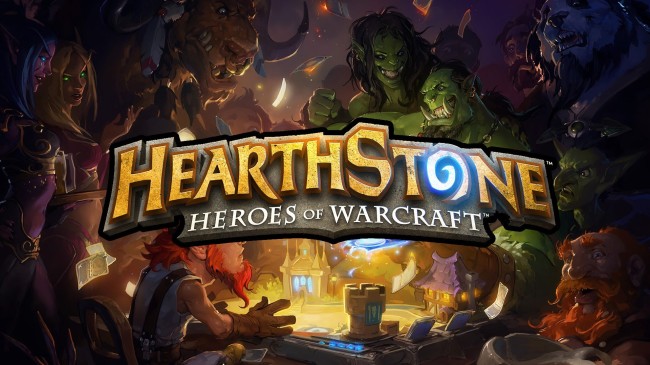
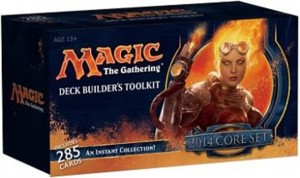
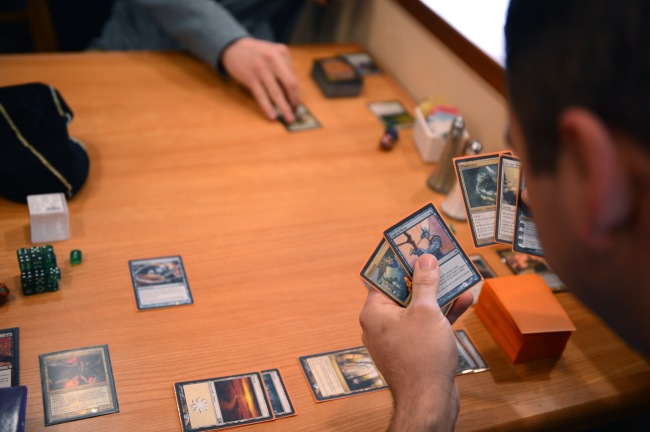

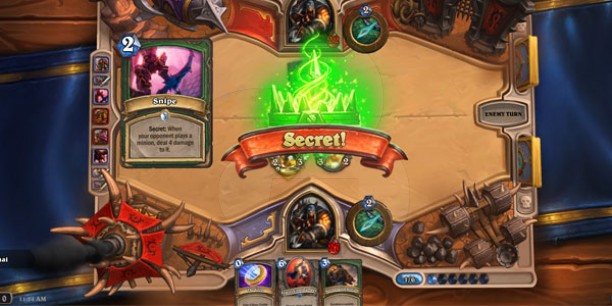

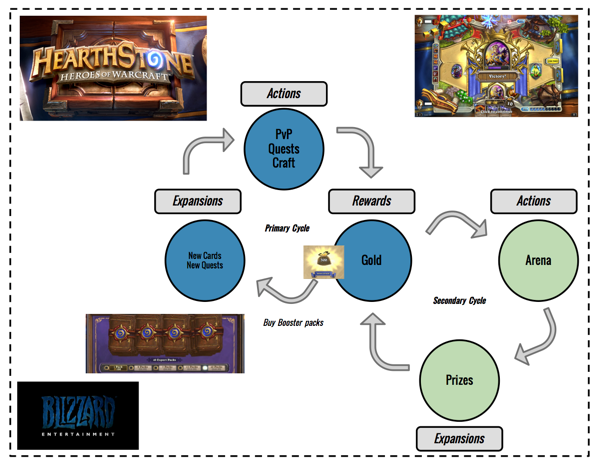
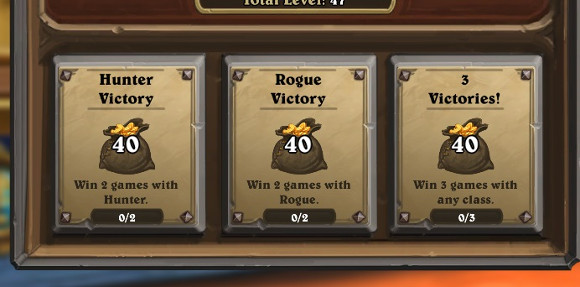
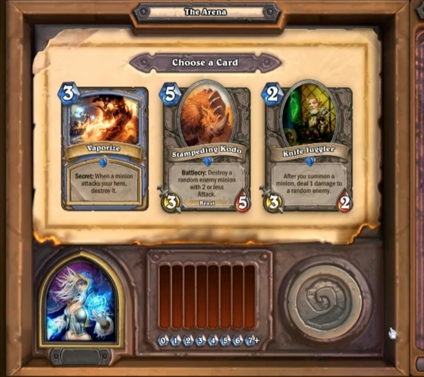
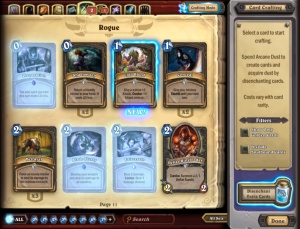

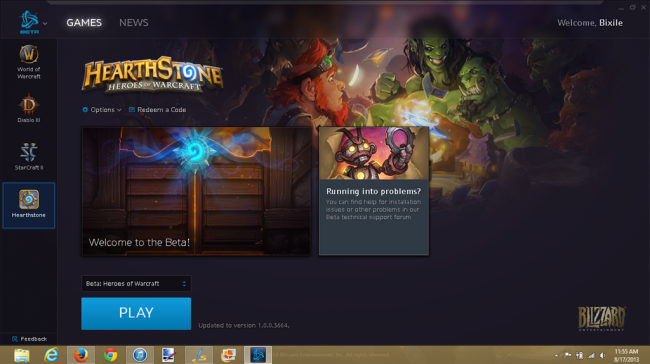
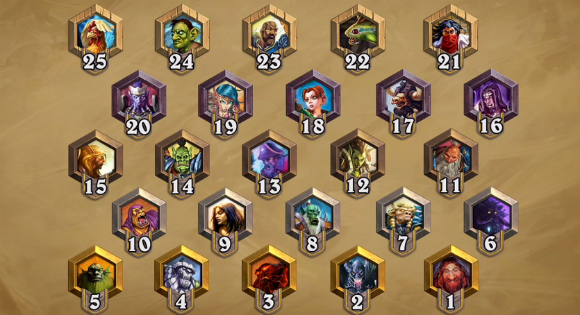



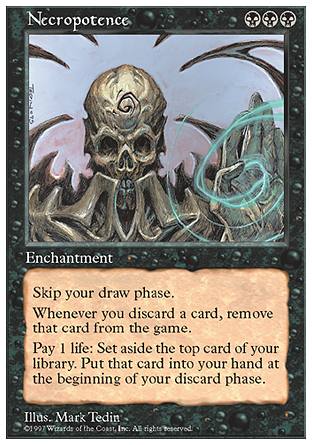
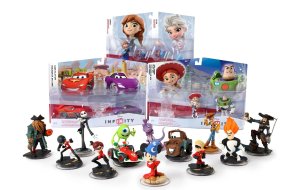
Pingback: Pokémon GO! – Fad or the Future? | Both Guns Blazing